- Administrator
- Albums and Singles
 The always prolific Uwe Schmidt (Senor Coconut, Atom Heart) has produced a third album that continues his push away from the traditional, sterile art of the Raster-Noton label by embracing a skewed, but still engaging take on nostalgic electro pop, bringing in recognizable sign posts throughout while never feeling like an unnecessary throwback.
The always prolific Uwe Schmidt (Senor Coconut, Atom Heart) has produced a third album that continues his push away from the traditional, sterile art of the Raster-Noton label by embracing a skewed, but still engaging take on nostalgic electro pop, bringing in recognizable sign posts throughout while never feeling like an unnecessary throwback.
The most overt and obvious nods are towards Kraftwerk, with the skittering beat fragments and French vocals of the title track implying their later work, and "Stop (Imperialist Pop)," more directly referencing "Musique Non Stop."The latter does veer more towards a cover/parody, but it still works as a stand-alone piece in its own odd way.
"My Generation," featuring contributions from Marc Behrens, sloppily samples bits of the Who song but scatters them amidst a series of intentionally cliché 1980s synth sequences. It manages to maintain the sensibility of the original song but with additions from Schmidt and Behrens that update it for their generation.
The other songs throughout are less specific in their references, but still ooze with nostalgia and familiarity.The live sounding drums and oddly hesitant vocals (courtesy of Jamie Lidell) that pepper "I Love U (Like I Love My Drum Machine)" lead it to some handclap and cowbell heavy perverse approach to synth funk, while "Empty" jumps off with a bouncy electro sense.However the sampled guitars and synthetic percussion that pop up give it a more industrial coloring, albeit a jaunty one.
Classic electro vibes are all over "Strom," with the modern stuttering voice treatments giving a contemporary edge to a breakdance ready song, complete with a pop-lock ready synth hook towards the end.Meanwhile "Ich Bin Meine Maschine,"with Alva Noto, keeps things scaled back with simple, repetitive rhythm loops, showing a more current sheen than the songs that preceded it, eventually pushed over the precipice into full on minimal house beats at the end.
Uwe Schmidt’s work can never be easily predicted, but he does seem to be using the Atom™ guise to inject a bit of pop-oriented levity to the otherwise po-faced Raster-Noton label, but it still manages to fit in amongst their catalog of fragmented rhythms and microsound clicks.Unlike a lot of their releases though, HD exudes a distinct sense of fun, and definitely does not seem to take itself too seriously.
samples:
 
Read More
- Administrator
- Albums and Singles
 Emuul brings patient drone to life with careful repetitions, and succeeds in an attempt to build something acutely iconic on his latest release. Free Structures doesn't drift or wander like a lot of drone music; its very purposeful motifs layer onto one another without reduction in volume and without compromising what is a very singular idea. I found this approach oddly immediate, and welcoming, despite the 17-minute running times of each piece.
Emuul brings patient drone to life with careful repetitions, and succeeds in an attempt to build something acutely iconic on his latest release. Free Structures doesn't drift or wander like a lot of drone music; its very purposeful motifs layer onto one another without reduction in volume and without compromising what is a very singular idea. I found this approach oddly immediate, and welcoming, despite the 17-minute running times of each piece.
I feel like maintaining a single drone—the harmonies and the identity created—is never as easy as it seems. It's very frustrating to try and control the same few notes for upwards of ten minutes without the ideas presented wearing thin. It's even harder when artists like Emuul (Kyle B. Iman) play with small bars of melody and simple loops that repeat endlessly, because a shorter, more staccato piece tends to tire itself out. All the nuances and interactions between notes turn grating when overexposed. It becomes more difficult to endure these small blissful sounds after a point; I feel totally satiated by them and can usually get nothing else out of them. On this album, that is not the case.
Free Structures is an album (very) vaguely themed around the rotation of the Earth (and other metaphors of universal cycles and rhythms), so repetition is an essential aspect to Emuul's approach. The first track, "Waiting For The Letdown," keeps a subsonic tremolo guitar melody sustained throughout the entire 17 minutes. As the song evolves, a few piano chords are dropped in, a harmonic drone in a higher register drifts into focus, and eventually back out, leaving only that initial melody once more. I feel entranced by it, however, not repulsed; its gentle progression suggests an endless meditation on something sublime, and hearing it over and over only serves to reiterate the importance of whatever thoughts cross my mind when I'm listening.
Iman introduces higher tones in the second song, "An Empty Measure," to the ever present guitars and abandons the pulsing motif for a more conventional slow chord landscape common in a lot of drone. Kyle defines the songwith alternately empty spaces and bassy rumbles, like thunder, hitting small peaks and valleys in a more subconscious approach to cycle and form than the other song had. It is the weaker of the two pieces in its indecisiveness, but it still feels intentional, as a companion to the other side; as a complement it plays like Emuul's resolved conscience; whatever grand idea he was wondering about on the first half has been figured out, and I'm just along to hear his reaction to it. It's about as simple as it can be, mining each little moment for whatever vague empathy it can.
Emuul's music pulls me along cautiously, and I feel more informed by the title than the music's own content, which is fuzzy and only suggestive of its wider implications. The music invokes a sure presence; it has a gravity to it that a lot of drone lacks, and an inner logic that holds it together. It's blurry to experience and difficult to unpack. But it invites me to listen again and again, and I find that I enjoy it more each time.
samples:
 
Read More
- Administrator
- Albums and Singles
 This minor but charming solo effort was recorded earlier this year while Ka-Spel enjoyed a vacation on Fire Island.  Given the logistical difficulties inherent in transporting an entire studio across the ocean, these songs are necessarily more loose, informal, and stripped-down than is typical for Edward (if anything about his oeuvre can be described as such).  Such an approach does not necessarily cater to his strengths (Ka-Spel is at his best when he is at his most complexly hallucinatory), but this batch of lilting, drum-machine-driven psych-pop miniatures offers some pleasantly twisted diversions nonetheless.
This minor but charming solo effort was recorded earlier this year while Ka-Spel enjoyed a vacation on Fire Island.  Given the logistical difficulties inherent in transporting an entire studio across the ocean, these songs are necessarily more loose, informal, and stripped-down than is typical for Edward (if anything about his oeuvre can be described as such).  Such an approach does not necessarily cater to his strengths (Ka-Spel is at his best when he is at his most complexly hallucinatory), but this batch of lilting, drum-machine-driven psych-pop miniatures offers some pleasantly twisted diversions nonetheless.
Knowing the origin of this album, it is hard to avoid speculating on both Ka-Spel's mindset and the order in which these songs were composed.  For one, it is amusing to think of anywhere in New York as an appealing vacation option in January.  Secondly, these six songs run the gamut from fragile, melancholy piano balladry ("A Sad Society") to comparatively sunny and upbeat ("One Big Happy Family") to endearingly playful (the strangled blurts of saxophone in "A Step too Far").  Despite that breadth of moods and styles, Fire Island still feels remarkably coherent, which is largely due to its restricted palette (a synth, a saxophone, and a laptop?) and its unexpected accessibility.  The sole exception is the requisite lengthy soundscape filler ("Surfing the Volcano"), but even that avoids becoming particularly nightmarish.
While Fire Island is certainly a refreshing change of pace for Ka-Spel, he was still not able to completely escape some of his more exasperating tendencies (overlong songs, filler, awkward tonal shifts, etc.).  However, with a few exceptions, those quirks are largely kept to a bearable minimum: all of the actual songs are quite good, despite their rough patches.  The most prominent wobbles are the otherwise likable "Mr. Negative" and "One Big Happy Family," which respectively suffer from an awkward string interlude and a vocal crescendo that sounds shrilly elfin, but even those are quite minor.  Most of the other songs are either completely flawless (the warm ambiance of "Entrance and Illumination") or boast motifs strong enough to sustain them through their minor shortcomings (like the heavy groove and peripheral mindfuckery of "A Step Too Far").
Consequently, it is somewhat surprising that this material is relegated to "limited-edition, self-released CDR" status, as it boasts a higher success rate than several of Ka-Spel's more formal, higher profile albums.  There is a certain logic to it, however, as a third of Fire Island's running time is consumed by "Surfing the Volcano" and a one-minute field recording of the sea.  Also, some of the remainder is arguably not particularly representative of Edward's vision (even if he is essentially a human kaleidoscope).  It is quite hard to imagine anyone who is a fan of his work being disappointed by this effort though: it may not be especially revelatory, complex, or ambitious, but it is consistently strong and somewhat unusual (and is almost certainly the leading candidate for "best album ever made on vacation in a beach community in the dead of winter").
Samples:
 
 
 
 
Read More
- Administrator
- Albums and Singles
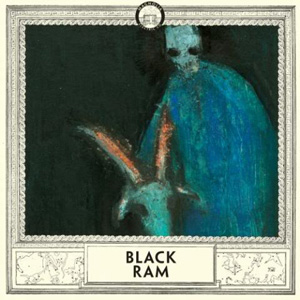 In 2005, when Camper Van Beethoven’s gear was stolen on tour, Jason Molina ran into David Lowery and offered to lend him some of Magnolia Electric Co.'s equipment. They became friends and, later that year, met in Richmond, Virginia to record some new songs Jason had in the works. Before he could finish, Molina’s mother suffered a stroke. He completed what he could and returned in 2006 to finish Black Ram, one of the four recordings that finally surfaced as part of 2007’s Sojourner boxed set. Backed by musicians not in the touring Magnolia lineup, it's one of the darkest and most distinct albums Molina ever released—closer to his Songs: Ohia days in spirit and tone, and overflowing with some of his best writing.
In 2005, when Camper Van Beethoven’s gear was stolen on tour, Jason Molina ran into David Lowery and offered to lend him some of Magnolia Electric Co.'s equipment. They became friends and, later that year, met in Richmond, Virginia to record some new songs Jason had in the works. Before he could finish, Molina’s mother suffered a stroke. He completed what he could and returned in 2006 to finish Black Ram, one of the four recordings that finally surfaced as part of 2007’s Sojourner boxed set. Backed by musicians not in the touring Magnolia lineup, it's one of the darkest and most distinct albums Molina ever released—closer to his Songs: Ohia days in spirit and tone, and overflowing with some of his best writing.
Secretly Canadian and Magnolia Electric Co. had a difficult choice to make in 2006. I'm still not sure they made the right one. Jason Molina and company had recorded three albums and two EPs worth of new music in about the span of a year. Faced with so much music, Secretly Canadian inexplicably froze up. Much of what was recorded would appear on the Sojourner box a year later, but at the time they felt they couldn't release everything at once. Instead, they put out a Jason Molina solo record, assembled Fading Trails from songs found on each of the four Sojourner CDs, and quickly followed everything up with a tour.
I still like Fading Trails, but after hearing Black Ram for the first time, I couldn't understand why it wasn't released instead. Had it not been tucked away in an intimidating box set of all new recordings, it might have received the attention it deserves, being one of Molina's best albums. Maybe Jason wanted to focus on the touring Magnolia band instead, or maybe Secretly Canadian planned on releasing Black Ram later. Either way, it half disappeared into the monolith of Sojourner and the fruits of Molina's tireless work ethic. Let Me Go, Let Me Go, Let Me Go kept me occupied for a long time, and before I could absorb everything on Sojourner, Josephine was on the way with the Molina and Johnson record not far behind.
A couple interviews in 2006 hinted at how special Black Ram was to Jason. In a Q&A on the official Magnolia site, he listed it among his best albums, calling it a concept record about a ghost. In a Chicago Reader interview from that same year he referred to it as "high-impact" and strongly emotional. There's no doubt it's a haunted record. That clue about the ghost concept won't solve any of Jason's many lyrical puzzles, but it does clarify his mindset. Lyrically, Black Ram is populated with images of death, dark riders, and an ancient landscape populated by mysterious and dangerous spirits.
It opens with "In the Human World," invoking the "mountains of the dead" and a despair that is better heard than described. It follows with "Black Ram," a song built up from apocalyptic dream images and magic rituals, and from glimpses of ghostly worlds that reside just at the edge of perception. There’s a lot of remembering and yearning, and ruthless self examination that admits guilt and holds on to hope and forgiveness with the same trembling breath—just listen to "What’s Broken Becomes Better" or "Kanawha"; Jason fits it all into tightly written, tersely performed four minute songs that hit as hard as anything on Didn’t It Rain or Magnolia Electric Co.
The subject matter gets so heavy and personal that the album sounds like a journey through the underworld in places, especially on the title track and "Will-o-the-Wisp," two of its most intense songs. Two of Jason's best from Fading Trails—"A Little at a Time" and "The Old Horizon"—are here too, sounding better and more natural alongside their proper brethren, which were all recorded with Miguel Urbiztondo behind the drums and on Harmonium, with David Lowery on bass, and with Alan Weatherhead responsible for guitar, pedal steel, Mellotron, and engineering duties. Filmmaker Rick Alverson, Andrew Bird, and the mysterious Molly Blackbird also lend a hand.
Musically, the band follows Jason’s lyrical lead. The instrumentation shifts from thick and soupy to sparse and skeletal depending on the song, but is always held together by the rhythm section. David Lowery’s bass swells and shakes on every song, providing shades of black and purple color for the guitars to shine against. Miguel Urbiztondo’s drumming pushes the music forward on one or two songs, but otherwise unfolds patiently, not keeping time so much as marking its passing. Even on the more rock oriented material, he keeps things smoky and indistinct, preferring tension and texture to a driving beat. The Mellotron and Harmonium help in that department too. I notice them most when they’re used to create a surface on which the melodies can skate. There is something almost creepy about the sounds the Mellotron makes, as if it were playing back samples from EVP sessions, or broadcasting noise from outer space.
Despite the slow pace and the dark themes, Black Ram uses contrast extremely well, making the darks darker and the light colors that much brighter. Melodically, the album is carried by Jason’s voice and just a few lead instruments. When guitars do take the lead, they do so in a big way. "What’s Broken Becomes Better" has an eviscerating electric solo that cuts so hard it turns the song around, giving it a hopeful finale. "A Little At a Time" also puts a guitar solo front and center, using it to add color and deliver the song’s dramatic climax. But, most of all, I hear and feel the weight of the rhythm section, murky and hot, and the pull of Jason’s singing. When he intones "goodbye, my love / goodbye" on "Will-o-the-Wisp" I can almost see the scene he’s painting; and when "The Old Horizon" finally hits, it chills to the bone—the feeling of isolation and being lost comes on strong, and Jason's use of piano and bowed percussion only amplify that loneliness.
With such strong musical performances, great songs, and such potent lyrical references, Black Ram accumulates a very believable and almost magical atmosphere. Deciphering all the allusions and personal references is probably impossible, but unnecessary anyway. Each time it ends, I leave the album thinking that all the places and spirits Jason mentions are real, that they're not just fanciful representations of personal thoughts, and that I might be able to hear them too if I listen hard enough.
So when the album starts and Jason asks "mountains of the dead are you listening?" I wonder if he is talking to me.
samples:
 
Read More
- Administrator
- Albums and Singles
 This limited-edition CDR is an experiment in spontaneity, as it is the product of a five-day recording frenzy that occurred last winter.  That endeavor proves to be a mixed success, as Taos Hum offers lots of great ideas, but not much in the way of great songs.  That is about what I would expect, as the Dots' Achilles' heel has always been that their voluminous output precludes aggressive editing, a trait that can only be exacerbated by rigid time constraints.  This is still an intermittently impressive effort (the band has definitely been on a hot streak lately), but the best moments are probably too diluted or overlong to offer much appeal to more casual fans.  Which, of course, explains why this is only a CDR.
This limited-edition CDR is an experiment in spontaneity, as it is the product of a five-day recording frenzy that occurred last winter.  That endeavor proves to be a mixed success, as Taos Hum offers lots of great ideas, but not much in the way of great songs.  That is about what I would expect, as the Dots' Achilles' heel has always been that their voluminous output precludes aggressive editing, a trait that can only be exacerbated by rigid time constraints.  This is still an intermittently impressive effort (the band has definitely been on a hot streak lately), but the best moments are probably too diluted or overlong to offer much appeal to more casual fans.  Which, of course, explains why this is only a CDR.
I should know by now that there is no way to predict where Edward Ka-Spel's muse will take him from album to album, but I was still taken aback by the Taos Hum's direction, as LPD's more limited and informal releases tend to be fairly abstract and improvisatory.  This one seems to be neither, as the bulk of these six pieces are coherent, structured songs with lyrics and hooks.  Also, rampant retro-industrial/goth touches make the album feel kind of like a time-capsule from the '80s or '90s (endearingly so, of course).  Such touches are most apparent on the opening "Salem," which is built upon a crunching drum machine beat and lush, minor key synthesizers.  Also, the central sequencer motif in "Divine Resignation" sounds like a close cousin to Severed Heads' "Dead Eyes Opened" (and probably a hundred other songs from that era as well).  Of course, the Dots are far too weird to offer up any such touches in a pedestrian or innocently referential manner. Taos Hum is anything but straight-forward.
Vocally and lyrically, Ka-Spel is in fairly fine form throughout the album, delivering his cryptic words with characteristically simmering intensity.  The songs that work best, unsurprisingly, tend to be the ones with strong hooks, such as the aforementioned "Divine Resignation," but some of the albums' "hooks" can be quite unconventional.  For example, "Ash and Sand" sounds like someone lazily and sloppily playing a banjo over a strangled, ghostly whine, while "The Piper" sounds like it was kitschily (and ingeniously) constructed from one of the preset rhythms on a cheap Casio keyboard.  Naturally, Ka-Spel and company can also sound quite compelling when they plunge into a nightmarishly abstract rabbit hole.  Unfortunately, they often decide to go in both directions within the same song, which is where things get quite dicey.
In fact, almost none of these songs are quite presented in their ideal format and both the album and the individual songs feel uneven and schizophrenic.  This makes Taos Hum feel like a prolonged cavalcade of exasperating misfires.  "The Piper" is probably the best single illustration of the problem, as it starts off as a very catchy and propulsive song that shows hints of fraying at the edges, but then dissolves into fractured free-form abstraction that seems to go on forever.  None of the other songs are quite sabotaged to that extreme, but they all have a maddening tendency to feel about twice as long as they need to be.  Also, the album's longest piece (the closing "Premonition 40") seems like complete filler, sounding like little more than a series of dissonant synth vignettes surrounded by dull dark ambiance.
Despite all of my grievances, I have a nagging suspicion that someone completely new to Legendary Pink Dots would find a lot to like on Taos Hum, as it is brimming with cool ideas and sounds as uniquely surreal and shadowy as anything else in the LPD catalog.  Unfortunately, after having heard so many other Dots' album, I cannot help but expect more from them than this.  That said, the Taos Hum sessions were still kind of a creative success, as the intense, compacted recording session demonstrably inspired a number of very promising, vibrant ideas.  I just wish the band had given themselves enough time afterward to sift through them all and get it right for the actual album.
Samples:
 
 
 
Read More
- Administrator
- Albums and Singles
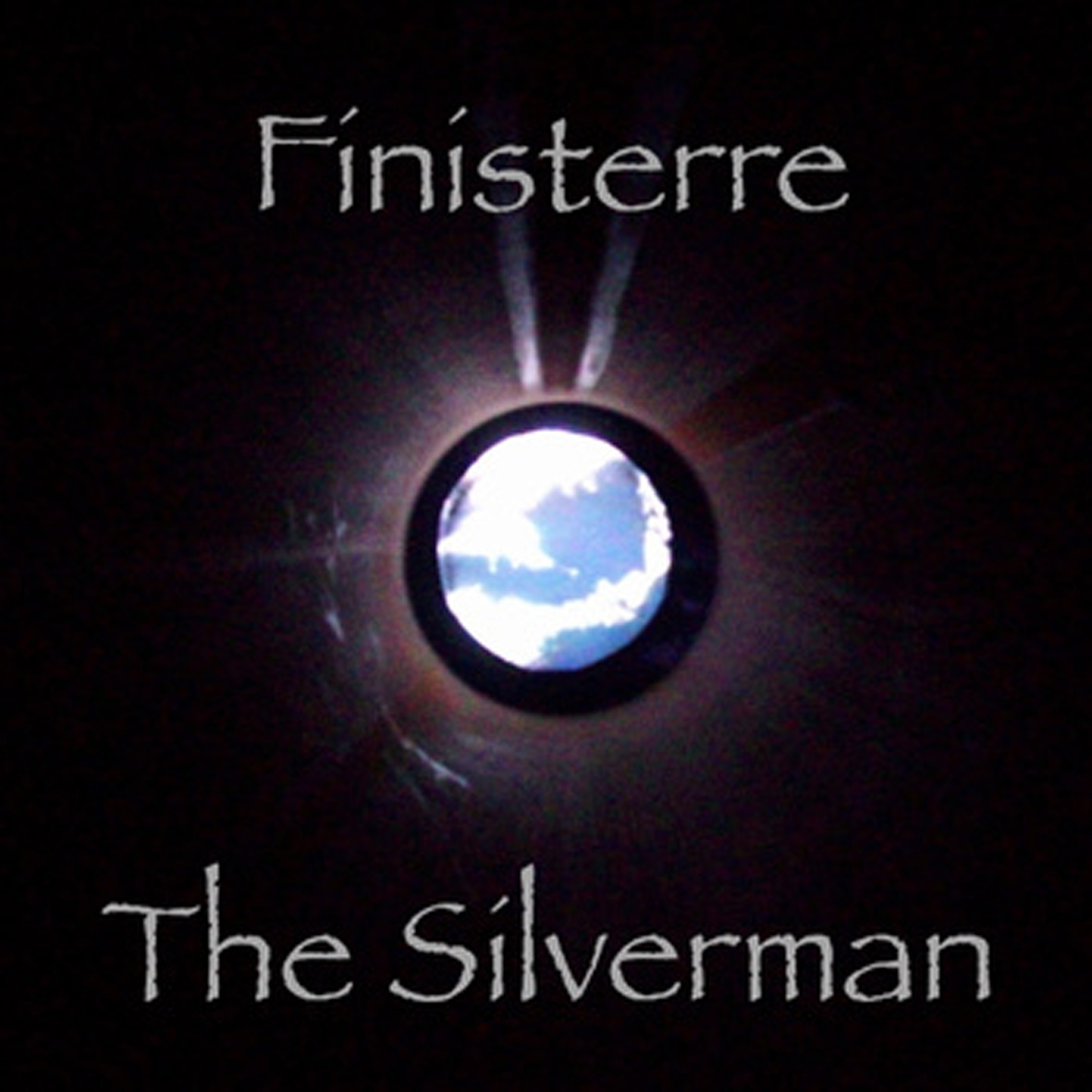 One fascinating aspect of the Legendary Pink Dots is that I never know where and when their simmering brilliance will fully manifest itself.  Case in point: this limited-edition solo effort by keyboardist Phil Knight was casually released on CDR on the same day as two other LPD-related albums with only the most cryptic and inscrutable of descriptions ("...aliens here to study mankind had taken control of the airwaves; spread confusion with fake weather reports..."), yet it contains a fluke quasi-noise/industrial collage that ranks among my favorite pieces in the Dots' entire discography.
One fascinating aspect of the Legendary Pink Dots is that I never know where and when their simmering brilliance will fully manifest itself.  Case in point: this limited-edition solo effort by keyboardist Phil Knight was casually released on CDR on the same day as two other LPD-related albums with only the most cryptic and inscrutable of descriptions ("...aliens here to study mankind had taken control of the airwaves; spread confusion with fake weather reports..."), yet it contains a fluke quasi-noise/industrial collage that ranks among my favorite pieces in the Dots' entire discography.
Finisterre consists of a trio of lengthy and very dissimilar soundscapes.  The first, "Fitzroy Cromarty," is the most subtle and drone-like of the three, as it is built upon slow-moving and ominous synth swells beneath a robotic-sounding, ring-modulated voice that seems to be reciting a shipping forecast.  Not much overt evolution occurs over the course of its 19-minute duration, aside from the addition of a faint pulse and a gradual increase in both density and general hauntedness.  That is more than enough to make the piece work though, as its eerie, otherworldly mood is quite wonderful.  To my ears, its masterfully understated dread evokes images of a malfunctioning radio aboard an abandoned boat adrift on a particularly lonely and forgotten stretch of ocean, which is a niche that is all too rarely filled as far as I am concerned.
Unfortunately, the following "Oscar's Last Day" completely ruins the spell for me, as it sounds like an annoying, artificial-sounding bagpipe motif unfolding over a watery, dated-sounding synthesizer bed.  It initially reminded me unfavorably of something that would be playing during a science documentary from the '70s, but then it grew exponentially worse when the mutant Celtic elements start fading in.  While I have thankfully never had a nightmare about a St. Patrick's Day-themed Doctor Who episode, I am dead certain that such a thing would sound an awful lot like this.  I  have absolutely no idea what Knight was trying to accomplish or whether or not he succeeded, but I no doubt that "Oscar's Last Day" is a horrible, horrible piece of music regardless.
Consequently, I could not have been more surprised by the closing "Spring," which is an obsessive, paranoid masterpiece that calls to mind classic Genocide Organ or Maurizio Bianchi.  It starts off with woozy, disorienting swells that mimic the Doppler effect of cars whizzing by someone lying in the road with the life ebbing out of them, as there is an awesomely weird, hallucinatory detachment to the traffic sounds along with some distant, indecipherable shouting.  Somehow, however, the piece gets even better from there, as it gradually snowballs in intensity with menacing hums and an echo-heavy, inscrutable, and layered spoken-word loop that sounds like an ominous news transmission or excerpt from a revolutionary speech.  Then it all slowly fades away without ever making a false move or overstaying its welcome.  It could not possibly be improved.
Such a strong finish makes for a baffling album, as "Spring" is so perfectly sculpted that I fleetingly entertained the possibility that I might be wrong about the execrable "Oscar's Last Day."  After revisiting it, however, my original assessment was brutally reaffirmed: Finisterre consists of an unlistenably bad center book-ended by two truly wonderful and inspired pieces.  As perplexing and aggravating as that is, it still leaves almost 40 minutes of sustained greatness and one piece that I would deem absolutely essential, making the largely under-the-radar Finisterre one of the year's most pleasantly surprising releases to date (albeit one that arguably includes one of the year's worst surprises as well).
 
Read More
- Administrator
- Albums and Singles
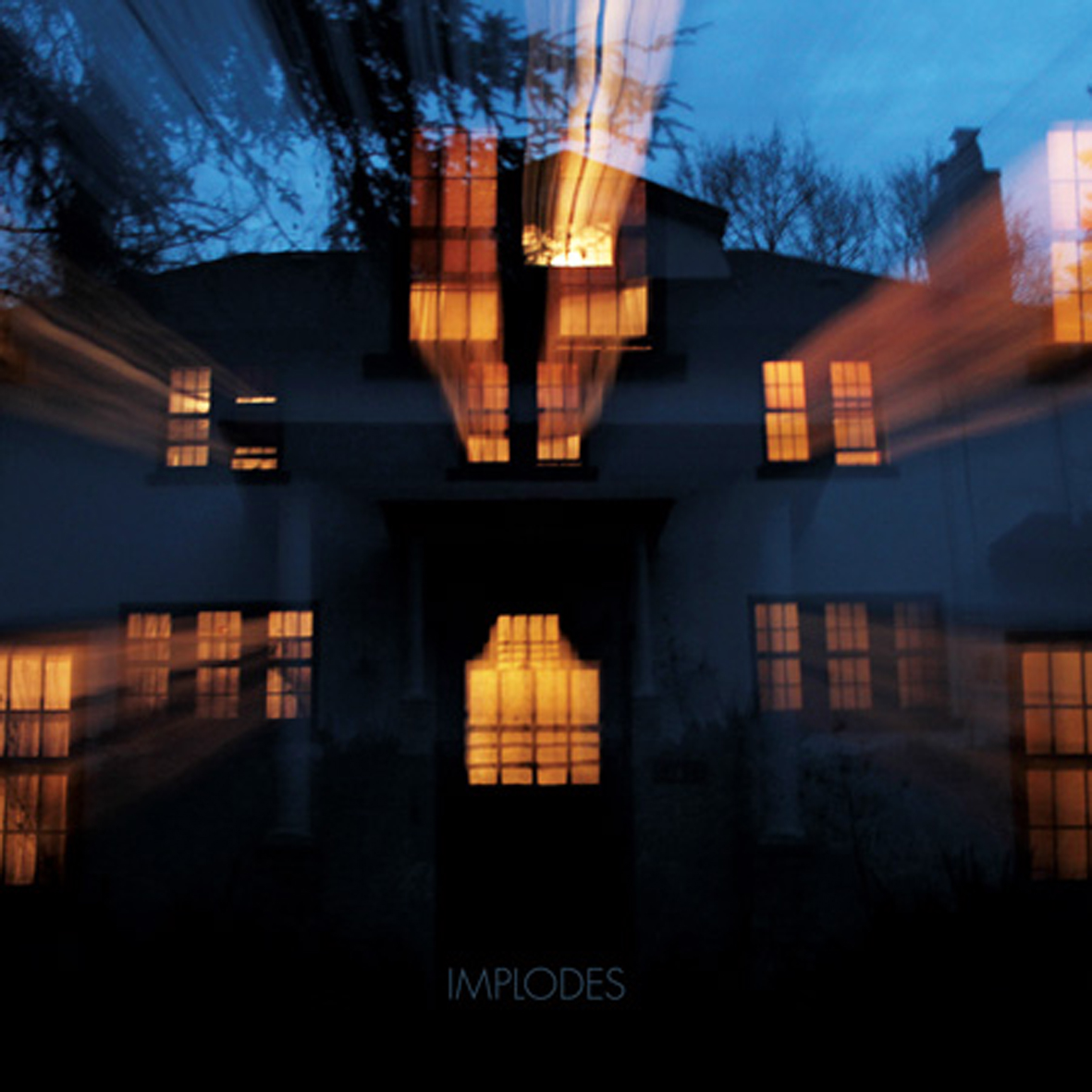 While it definitely boasted some of the year's best cover art (I am a sucker for shadowy figures wielding curved blades), Implode's 2011 Kranky debut (Black Earth) occupied a fairly unappealing niche for me, offering up a lot of bleak, slow-motion shoegaze with too much processing and too few hooks.  Two years later, Recurring Dream offers more great cover art and more brooding effects pedal abuse, but the band have definitely grown quite a bit better at what they do.  It is still a bit of a slog to make it through the entire album, but the handful of highlights are great enough to make it worth the effort.
While it definitely boasted some of the year's best cover art (I am a sucker for shadowy figures wielding curved blades), Implode's 2011 Kranky debut (Black Earth) occupied a fairly unappealing niche for me, offering up a lot of bleak, slow-motion shoegaze with too much processing and too few hooks.  Two years later, Recurring Dream offers more great cover art and more brooding effects pedal abuse, but the band have definitely grown quite a bit better at what they do.  It is still a bit of a slog to make it through the entire album, but the handful of highlights are great enough to make it worth the effort.
After deceptively opening with a brief bit of creepily Lynchian synth ambiance ("Wendy 2"), Implodes completely blindsided me with "Scattered in the Wind," which sounds as close to a hit single as this band will ever come.  All of the usual haze and sustain-heavy guitar soloing remain in place, as do Matt Jencik's  narcotized vocals, but it is greatly enlivened by a meaty bass riff and insistently pulsing guitarwork.  Also, the decision to double Jencik's vocals with bassist Emily Elhaj's gives the song a more compelling and distinctive dynamic than is usual.  Those seem like such a simple tweaks to the Implodes' sound, but they make such an enormous difference.  I am far more likely to put up with (or even enjoy) a band's indulgences if they are presented with at least one concretely gratifying thing to hold it all together (charisma, power, rhythm, a strong melody, whatever).  "Scattered in the Wind" boasts several such elements and totally kills as a result.
The quartet unexpectedly out-do themselves yet again two songs later with the hallucinatory synth ambiance of "Zombie Regrets," which (to my ears) is probably the best piece they have ever recorded.  For one, it is short enough that it does not overstay its welcome.  More significantly, however, its dreamy idyll is brilliantly disrupted by thick, vibrato-heavy swells of melody.  In a way, "Zombie Regrets" is a microcosm that illustrates everything that is both wrong and right with Implodes, as it works so beautifully for three reasons: 1.) it offers an unexpected twist on something relatively familiar, 2.) its various components are both strong and clear, and 3.) it has immediacy and physicality.
Missing the third part is often Implodes' fatal flaw, as their guitars are generally so heavily processed that they feel floating and detached.  That is fine if there is something else to provide a song's heft (ie- Elhaj's bassline in "Scattered in the Wind"), but that does not occur as frequently as it needs to.  Also, a lot of Implodes songs lack a strong central motif, which makes them feel more like delivery systems for cool guitar solos than actual memorable songs.  Granted, the quartet have a real knack for creating an appealingly heavy and/or drugged mood, but the songs quickly blur together when there are not clear hooks to make them stand-out.
Fortunately, Implodes' talent for the unexpected resurfaces in a few other pieces to dazzling effect.  For example, the crescendo of "Necronomics" sounds like a time-stretched A Place to Bury Strangers getting sucked into a black hole, while "Wouldn't You Know It" features some awesomely evil-sounding vibrato over the top of its dirge-y chord progression.  Touches like that proved to be the tipping point for me: I definitely like this band now.
Recurring Dream is not necessarily a great album, but its best moments make it clear that Implodes are no ordinary band.  Rather, they seem to be a band with extraordinary vision struggling with uncharted territory (shoegaze meets cosmic horror and the cold enormity of space?).  That is a tall order.  In fact, I would not have thought such a thing were possible or desirable before hearing this album.  For now, Implodes have only captured fleeting glimpses of that elusive vision, but those glimpses are glorious.
 
Read More
- Administrator
- Albums and Singles
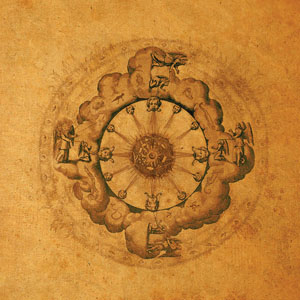 As half of the black metal influenced duo Menace Ruine, Geneviève Beaulieu gives the project its unique sound via her distinct, idiosyncratic voice that alternates between dramatic and understated. On the debut of her side project Preterite (with multi instrumentalist James Hamilton), the metal is scaled back and the more folk elements are pushed forward, but in a way that defies expectations based on that simple description.
As half of the black metal influenced duo Menace Ruine, Geneviève Beaulieu gives the project its unique sound via her distinct, idiosyncratic voice that alternates between dramatic and understated. On the debut of her side project Preterite (with multi instrumentalist James Hamilton), the metal is scaled back and the more folk elements are pushed forward, but in a way that defies expectations based on that simple description.
In many circumstances, the combination of buzzing, accordion like tones and female vocals in a context such as this either does nothing for me or completely turns me away. Here, however, there is a distinct edge to this that makes it stand out, such as the more abrasive sounds underscored with tasteful strings on "Oath," and complimented by Beaulieu's powerful voice.There is a distinct medieval, neofolk influenced quality throughout, but sounding entirely unique.
"The Fourth Corner" makes use of those same pieces, but rearranges it into a more restrained sound, with the strings creating a warm, pleasant drone.The vocals are more restrained overall, which adds to the overall sense of the song.The complex mulitracking of voice and dissonant, ugly sounds at the end make for a drastic, but appreciated change.
The three remaining pieces drift more towards a sound that resembles Menace Ruine, integrating more electric guitar without ever crossing that threshold into metal.The drumless expanse and stop/start moments of "Trial of Strength" offset the effected guitar and the booming, sustained vocals definitely add a distinct color.The lengthy "Viriditas" is similar, with Beaulieu's dynamic vocals shifting from a declaration to a roar multiple times, ending the song (and album) in the grasps of a wall of dissonant noise, with the only identifiable sound being a pounding low-register piano amidst cavernous reverb.
Menace Ruine is not a project that has been bogged down with genre conventions by any means, but I do appreciate Preterite's pushing of some of those elements into different, more abstract fields.The more folk infused pieces balance out the more guitar laden ones, meaning that neither sound dominates the album, nor do any of the pieces feel unfinished or fragmented as a failed experiment would be.It instead makes for a related, but distinct, but thematically connected side project.
samples:
 
Read More
- Administrator
- Albums and Singles
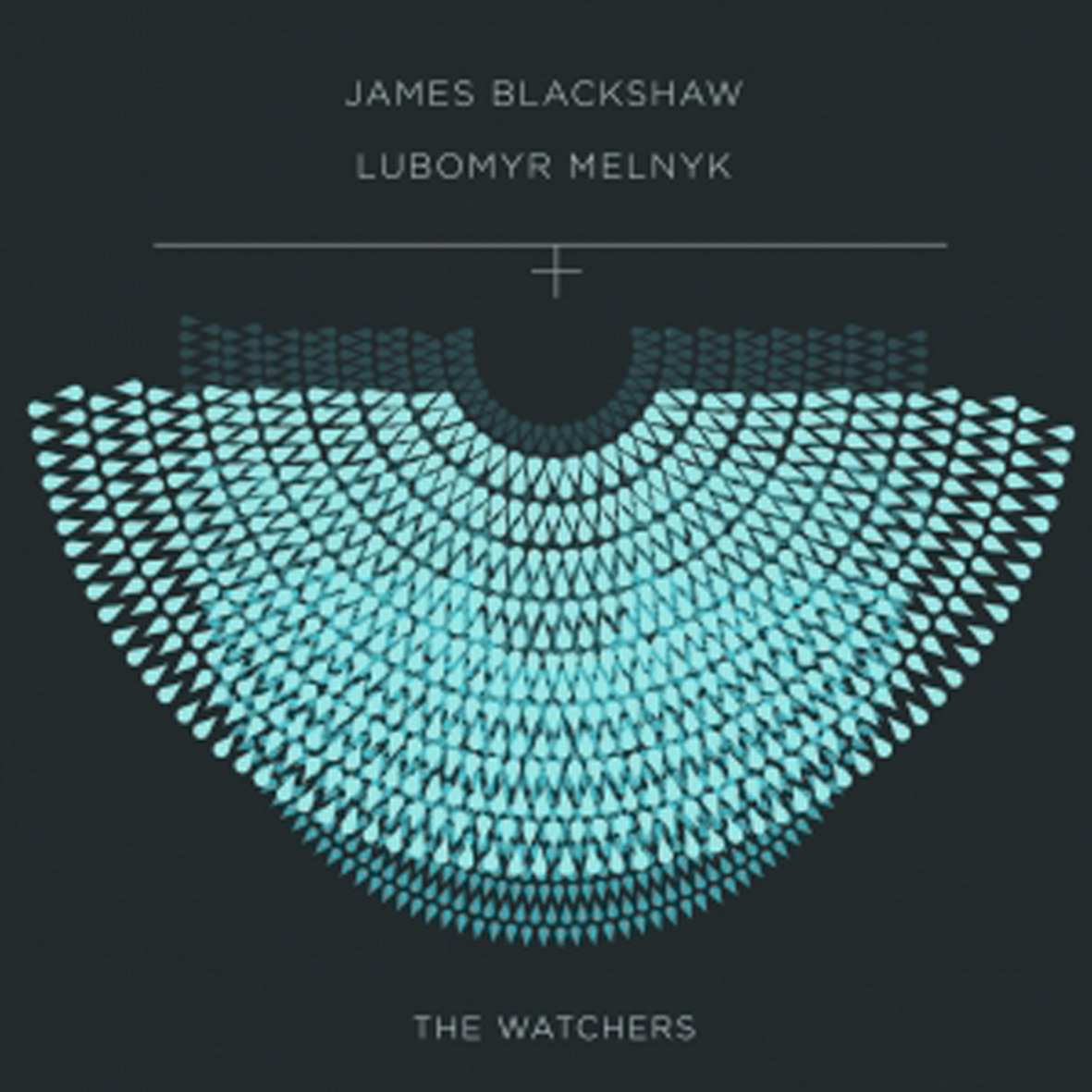 In a very real sense, The Watchers is an endearing improbable album that captures a magical and ephemeral union between two like-minded virtuosos playing together for the first time.  The catch, unfortunately, is that the magic was something of a closed-loop: while the two musicians flowed together as seamlessly and intuitively as old friends, the end product basically sounds like a rough sketch for an unfinished James Blackshaw album (albeit one where Blackshaw himself is often perversely relegated to the background).
In a very real sense, The Watchers is an endearing improbable album that captures a magical and ephemeral union between two like-minded virtuosos playing together for the first time.  The catch, unfortunately, is that the magic was something of a closed-loop: while the two musicians flowed together as seamlessly and intuitively as old friends, the end product basically sounds like a rough sketch for an unfinished James Blackshaw album (albeit one where Blackshaw himself is often perversely relegated to the background).
This is my first exposure to Melnyk's work, which surprises me, as he is quite a noteworthy fellow.  For one, he is the fastest piano player on the planet, a claim bolstered by the fact that he actually holds two world records for it.  More significantly, however, he has forged his own unique strand of minimalism that he calls "continuous music."  Rather than using his prodigious speed for blinding multi-octave runs, Lubomyr unleashes a vibrantly rippling sea of arpeggios and patterns that leaves a fog of overtones in its wake. A greatly modified version of that approach can be found in much of Blackshaw's recent work as well, which is no surprise, as Melnyk has been one of his influences for a while.
In fact, the two originally met when James bought some albums from Lubomyr at an Estonian music festival back in 2008.  While they immediately hit it off, it took almost four years for both of them to wind up anywhere near each other again, which occurred when Melnyk played his first London show in 2012.  He and Blackshaw convened the following day at the Vortex Jazz Cafe and improvised these four pieces over the course of six hours, allowing themselves a maximum of two takes for each one.
While neither musician is known for their improv skills, both seemed to handle the challenge ably, as they are clearly on the same wavelength from the first note.  Unfortunately, The Watchers is hamstrung by some issues that are far more fundamental.  For one, the man behind the idea of continuous music unsurprisingly plays continuously.  Secondly, pianos are significantly louder and more resonant than acoustic guitars.  That combination makes for a very strange outcome, as all four pieces (named after the Royal stars) sound very much like James Blackshaw pieces with very "James Blackshaw" chord progressions, but the intricacies of what Blackshaw is actually playing on his 12-string are sometimes very hard for human ears to hear (particularly when Lubomyr starts to open up).  Yet somehow James still seems to be the one leading, as Lubomyr's clearer and more melodic arpeggios seem to change with Blackshaw's tremelo-picked coloration.
Another problem is that of dynamics, as both musicians are playing continuously, which makes the entire album blur together a bit.  On some occasions, such as near the end of "Venant," Blackshaw finds the space to contribute an actual melody, but it is usually only his furiously tremelo-picked single notes and chords that are able to break through Melnyk's rippling cascade and its lingering haze of overtones. That is not necessarily a failure, but it is a bit unsatisfying, as it basically sounds like an incredibly dexterous classical pianist playing the chord progressions to a James Blackshaw album in an extremely maximalist minimalist way while James provides subtle color and texture through an uncomfortably enormous expenditure of energy.
For a one-time improv set from non-improv guys, I suppose that is not too shabby, but the beautiful transitions, melodies, and complexities that elevate Blackshaw's recorded work into something great are simply not present here.  Of course, Melnyk's aesthetic is diluted as well, but that is not quite as striking, as The Watchers does not sound at all like a Lubomyr Melnyk album.  Hopefully, James and Lubomyr will someday find time to actually compose and record in a studio together, as it seems a bit tragic that the sole documentation of their promising union is a spontaneous performance outside of either man's true area of expertise.
 
Read More
- Administrator
- Albums and Singles
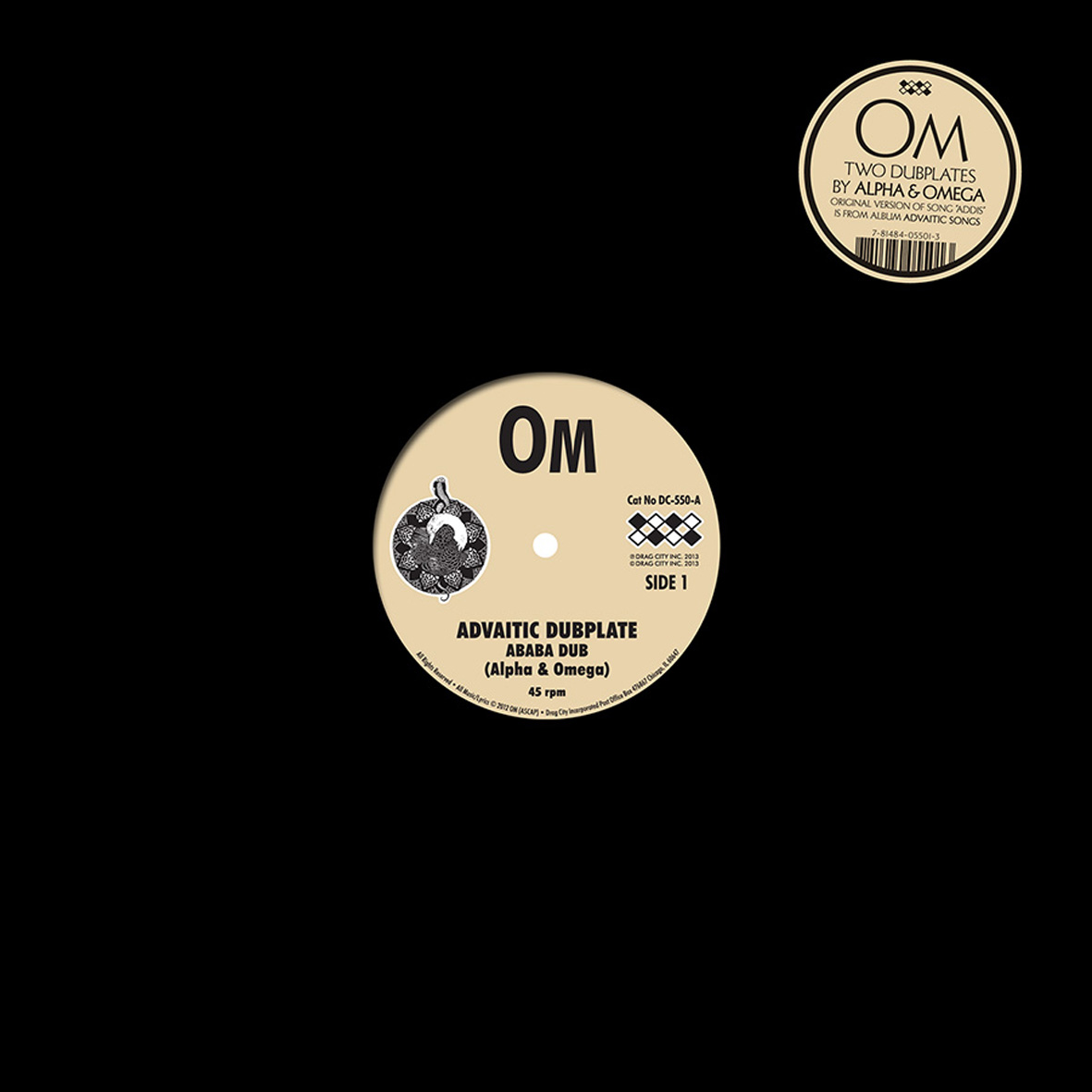 This single is a particularly divergent release in a career where divergence is rapidly becoming the norm, combining (arguably) the least Om-like song in their entire discography with Al Cisneros' recent fascination with dub reggae.  I expected the result to sound a lot like Al's solo dub debut from last year ("Dismas"), but this is something completely new altogether.  The reason for that is that Cisneros handed over the controls to seasoned British roots duo Alpha & Omega.  The piece is likable in its own way (once I got past reeling from my subverted expectations), but I suspect many Om fans will find that this detour is not for them.
This single is a particularly divergent release in a career where divergence is rapidly becoming the norm, combining (arguably) the least Om-like song in their entire discography with Al Cisneros' recent fascination with dub reggae.  I expected the result to sound a lot like Al's solo dub debut from last year ("Dismas"), but this is something completely new altogether.  The reason for that is that Cisneros handed over the controls to seasoned British roots duo Alpha & Omega.  The piece is likable in its own way (once I got past reeling from my subverted expectations), but I suspect many Om fans will find that this detour is not for them.
The decision to enlist Alpha & Omega was certainly a bold and interesting one, as their influence is unquestionably a bit of a double-edged sword.  For better or worse, it shows that Al is now all-in when it comes to his love of dub reggae, seeking out actual, established reggae collaborators and releasing a real dubplate rather than working with electronic/experimental folks closer to his own scene.  While that could cynically (and hilariously) seem like just another entry crossed-off a stoner bucket list ("Write a concept album entirely about weed?  Check!  Embrace Indian instrumentation?  Check!  Make a real reggae album?  Almost there!"), it is also abundantly clear that Alpha & Omega are objectively very skilled at what they do and would be certain to produce something worthwhile (and I bet they probably know a lot of cool studio secrets that Al does not at this early stage of his dub phase).
Two things about "Ababa Dub" and its nearly indistinguishable flip-side immediately wrong-footed me though.  Firstly, Advaitic Songs' "Addis" sounded closer to Dead Can Dance than Om in its first incarnation and now its link to Om's sound is even more tenuous: the remix retains Kate Ramsey's vocals, the tabla, and the descending cello motif, but Al's bass is replaced and his vocals were never there to begin with.  Secondly, the languorous pulse of the original "Addis" seemed like the ideal raw material for smokey, sensuous dub heaven, but Alpha & Omega opted instead to speed-up the tempo to transform the piece into something unexpectedly tense, insistent, and tough.  I expected "sexy" or "hypnotic," but instead I got something that sounds like it should have someone toasting about revolution over the top of it.
Of course, an unexpected artistic decision is not the same as a bad one: Alpha & Omega did not make the record I wanted, but they did a fine job making the record they wanted.  While the two remixes are a bit faster than is probably ideal, the duo otherwise deliver just about everything I would want from a dub single: spectrally dissipating vocals, artfully accented percussion, hazy textures, great use of space, and...uh...something that sounds like a car alarm.  There is certainly some deeper common ground between Om and this dubplate to be found, as the two aesthetics share a devotion to both bass and repetition, but Addis Dubplate ultimately feels a lot more like a likable dub piece that happens to contain some Om samples than a fresh twist on Om's sound.  Which, of course, is perfectly fine, but different....possibly even unique, as Drag City's next two Cisneros platters tread a bit closer to expected territory.
 
Read More
- Administrator
- Albums and Singles
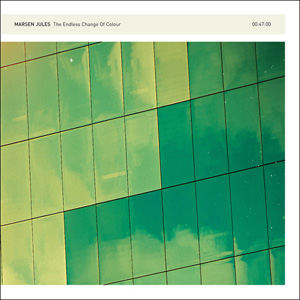 German artist Marsen Jules has been working in sparse, subtle worlds of ambient sound for over a decade, and this single song album follows that template. Living up to its title, throughout the 47 minutes there is a constant change of light and dark, hues and saturations that never stay still.
German artist Marsen Jules has been working in sparse, subtle worlds of ambient sound for over a decade, and this single song album follows that template. Living up to its title, throughout the 47 minutes there is a constant change of light and dark, hues and saturations that never stay still.
Based upon generative compositions sourced from a single phrase on an old jazz record, the result hardly resembles its source.Shimmering, powerful tones are utilized throughout, initially ebbing and flowing passages that seem as if the smallest sound has been expanded into these infinite swells.Never do they seem to be droning, because they are always on the move, becoming more forceful to then just pull back slightly.
Initially the results are mostly light, with buoyant, glistening passages hovering, but slowly things are led into more somber moods.The change is slow, to the point that it is almost unnoticeable, until a few minutes in where the entire mood has shifted dramatically.The higher register string-like drones alternate into more bass emphasizing infinite harmonium passages: sometimes gentle, sometimes bleak.
The major downside to this work is that because of the ascetic, minimal construction and slow, almost microscopic changes and developments, it does not stay entirely captivating throughout.While listening, I could not help but sometimes allow my attention to drift off to something else, and then noticing the difference in sound once I regained my focus.
Never did I feel the urge to completely tune the sound out, or even feel the need to stop listening, but it admittedly did not keep me at the edge of my proverbial seat for the full duration.I always feel particularly satisfied about ambient works that keep me focused and wanting to do nothing else, and The Endless Change of Colour does not manage to do that.It has a strong concept and made up of pleasant tones and textures, but ultimately ends up falling into the trap of not being overly distinct from so many other ambient albums out there.
samples:
 
Read More

